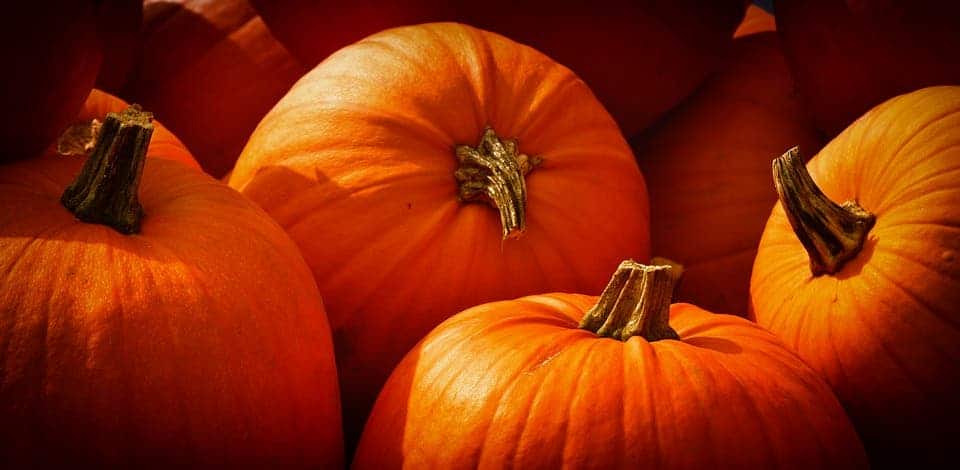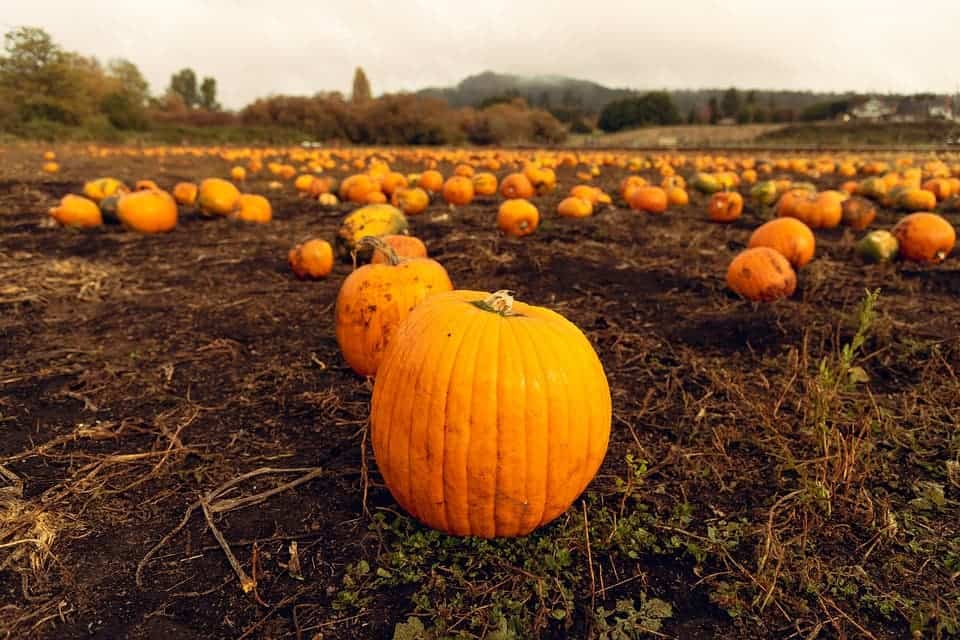Pumpkin pollution is a real problem. Billions of pounds of pumpkin will end up in the landfill, not on a plate, and that’s probably the scariest thing about Halloween.

Throw up your spider webs and hang those skeletons, Halloween is here! As all terrors are let loose on the day, excessive food waste is also creeping up. Billions of pumpkins have been bought for the occasion — and most of them will end up in the landfill, not beneath a pie’s crust. Which is a shame, as pumpkins are delicious.
In a world where 2 billion people are malnourished, even though we produce enough food to feed the total world population, and where families turn to food banks even in wealthy countries, wasting perfectly edible pumpkins is immoral. It’s also pollution. Here’s what you need to know.
Pumpkin pollution
Eight million pumpkins will get binned on November 1st in the UK alone, The Guardian reports. If you think that’s scary, in the US, that figure is closer to 1 billion. It’s a terrible waste of a very tasty treat, and it’s especially a tragic waste as the pumpkins could be used to make “enough pumpkin pie to feed the entire [UK] nation,” the publication adds, citing a study commissioned by stock brand Knorr.
Roughly 58% of all consumers will buy a pumpkin to carve this Halloween, according to the Hubbub Foundation, a charity that creates environmental campaigns “with a difference”. Over half of these buyers (51%) will throw away the pumpkin and leftovers, without cooking or composting it, they add. Only about one-third of buyers will try to cook the pumpkin’s innards.
“Halloween has become increasingly popular in the UK, but unlike those on the other side of the pond, many Britons aren’t cooking with their pumpkin carvings – instead they’re throwing them away,” said Tessa Tricks of Hubbub. “This is contributing to the overwhelming amount of waste thrown away by UK households each year.”
The Hubbub Foundation, which runs the #PumpkinRescue campaign, focused on data in the UK. But the findings translate well to every other country with enthusiastic adherence to Halloween traditions, such as the US.
Writing for Inhabitat, Perry Miller says that the land of the apple pie will trash 1.3 billion pounds of pumpkins after the festivities. All that extra trash will wind up in the landfill, which wastes money and is bad for the environment. Once there, the pumpkins will start to rot away, releasing methane and carbon dioxide — both greenhouse gases.
Shockingly, according to a survey of 3,000 Britons, only 42% knew that the inside of a pumpkin is edible. This means that over half of consumers are unaware that they could be using the inside of a pumpkin in cooking and beverages.

Pumpkin waste everywhere
Canada will also see its fair share of pumpkin waste. Farmer Rob Galey told Inhabitat that pumpkin patches attract thousands of visitors each year from all over the country. They will buy a pumpkin and take it home but don’t intend to eat it. They’re buying a metaphor, Galey explains. Something that represents an abundant fall harvest, something that will look good in a photo — but not food.
There’s also an ethical side to consider here. Some Halloween pumpkins are inedible and specified as “for ornamental use only” but the flesh inside is edible. With so many people starving across the world, can we make peace with ourselves for this gratuitous display of disregard for food?
The key is keeping an eye on sustainability from the start. Don’t buy more than you need, and keep in mind that at some point, you will need to discard the pumpkin somehow. As for the insides, you can use
If you’re looking for tips on how to cook your plump Halloween pumpkin, Hubbub’s #PumpkinRescue campaign page has some pretty nifty suggestions. If you’re in the UK, you can also check out some of the events they’re holding from the 5th October through to November 5th all over the isles, ranging from “carving and cooking workshops to soup tasting.”
How to reduce and eliminate pumpkin waste
Here are a few other ways in which pumpkins can be used:
- Composting: At the most basic level, pumpkins can be composted, which returns their nutrients back to the soil. Composting reduces the methane emissions that would occur if they were to decompose in a landfill. Pumpkin pulp can be used to make composting easier. Simply chop the Pumpkin up into small pieces and put it in with your regular kitchen waste.
- Baked goods: Baked pumpkin can be a delicious treat. Simply put the pumpkin filling into an oven, with a bit of sugar and cinnamon, and enjoy free baked goodies.
- Roasted seeds: The seeds inside the pumpkin can be eaten as snacks or baked into bread, pastry, muffins, or anything you prefer.
- Pumpkin Puree: The flesh can be cooked and pureed to make soups, pies, and other dishes.
By implementing these ideas and spreading awareness about the value and versatility of pumpkins, communities can significantly reduce the waste associated with this seasonal fruit.
Of course, buying responsibly is also an important way to reduce waste. Don’t buy more than you need and use what you buy!
So let’s remember that pumpkins have far more to offer than just a spooky facade. The haunting reality of pumpkin waste should serve as a wake-up call to all of us. It’s not just about reducing waste but also about cherishing the resources we have and acknowledging the value of every bit of food.
This Halloween season, and in the years to come, let’s take a pledge to treat our pumpkins with respect, embracing their culinary potential and ensuring they serve a purpose beyond the holiday. After all, in the grand scheme of things, nurturing a sustainable mindset is the real treat.


